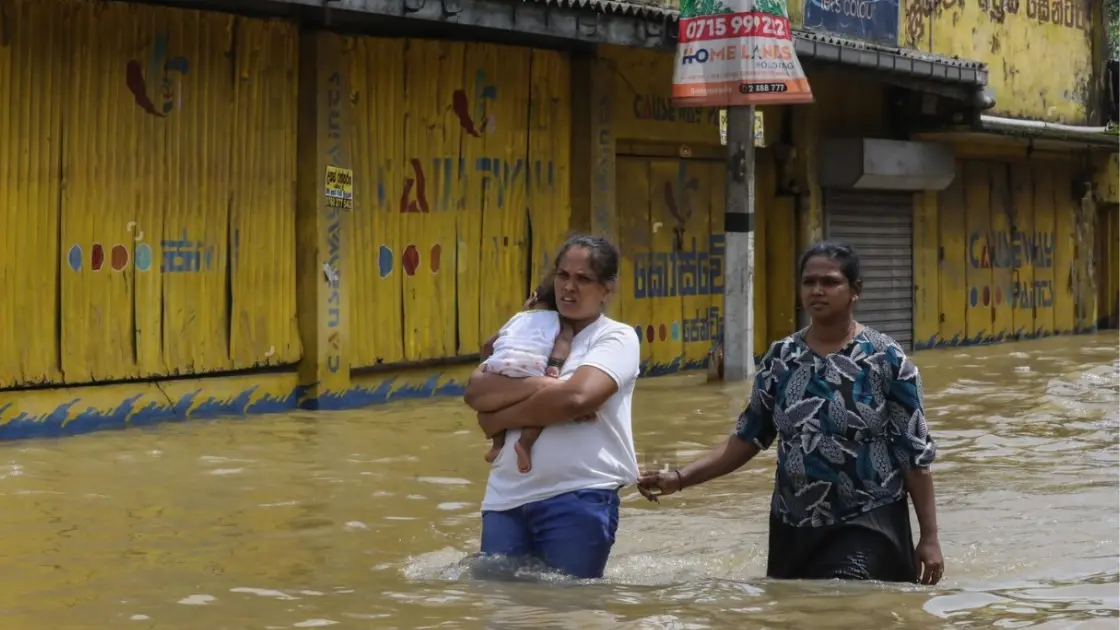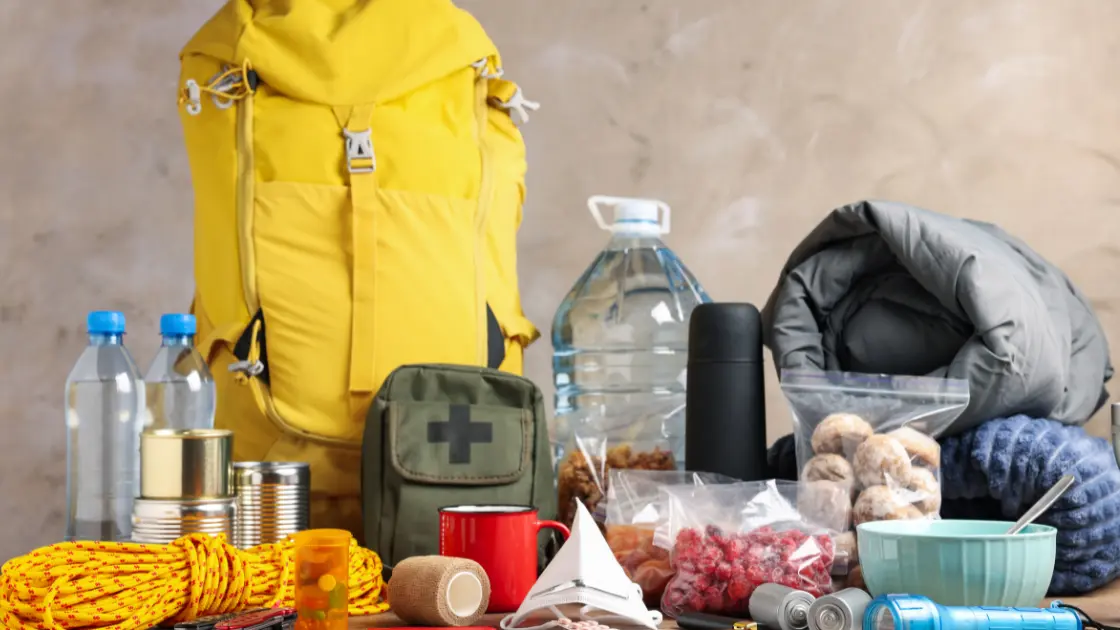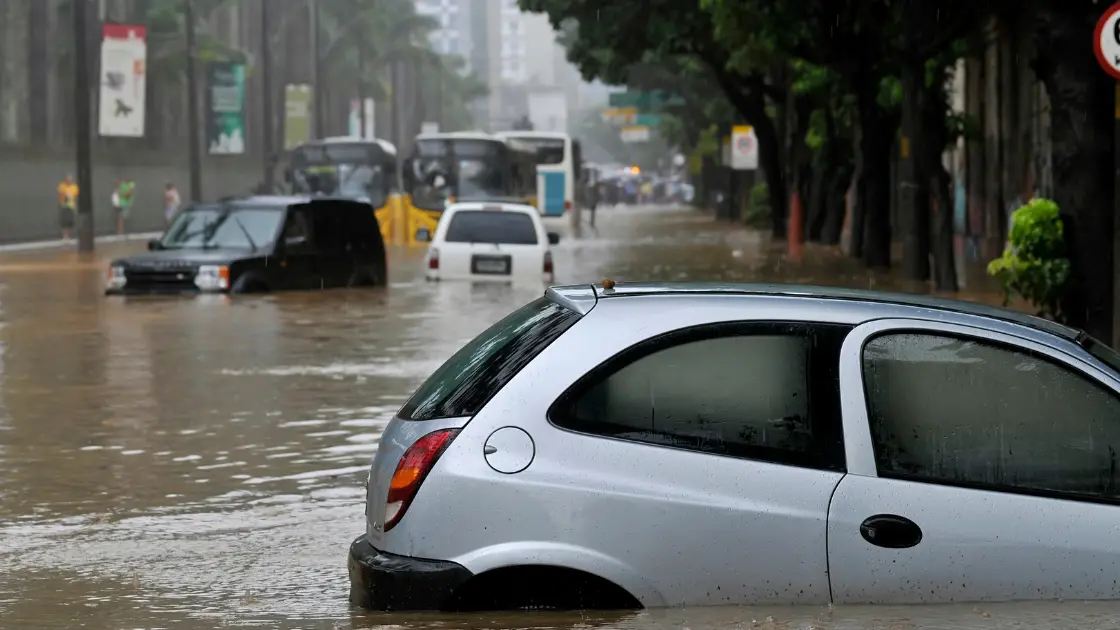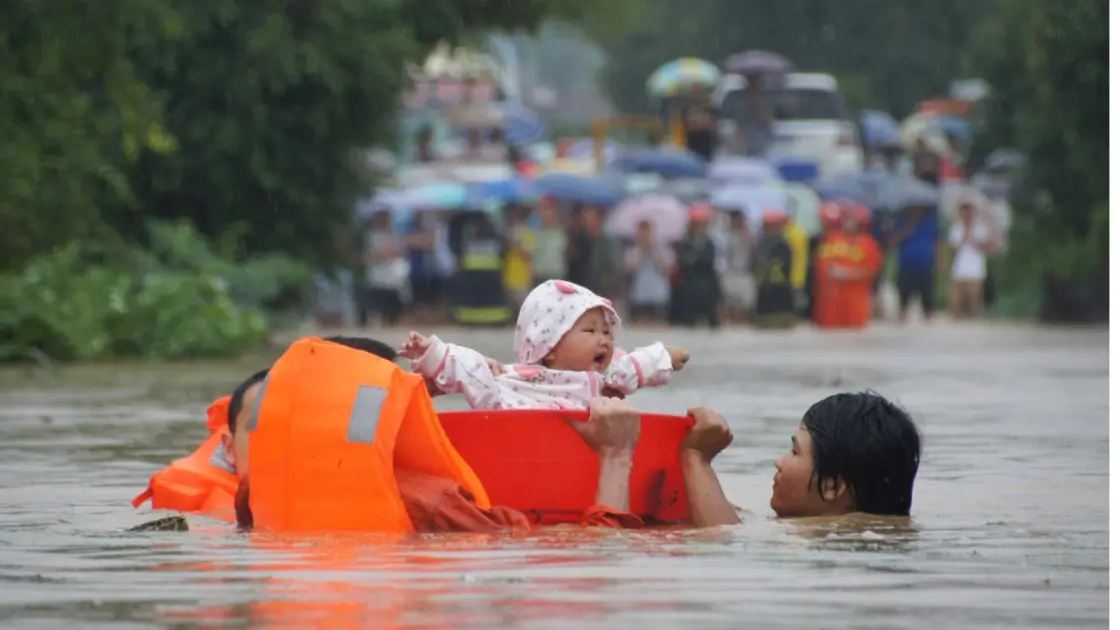Babies in flood situations face some of the highest risks during natural disasters. In this guide, we focus on what you can do to protect your infant in case of flooding—from preparedness to emergency rescue actions.
Table of Contents
Why Babies Are Most at Risk During Floods

Infants are completely dependent on adults. They cannot walk, talk, or ask for help. They are more vulnerable to:
- Hypothermia
Hypothermia happens when a baby’s body loses heat faster than it can be produced, particularly dangerous in flood conditions. Infants have relatively little body fat and don’t regulate temperature as effectively as adults. Moist clothing and wind, cold water increase the odds. Keep babies dry, layered, and close to your body in floods.
- Drowning
Drowning is a major cause of deathof babies floods, particularly for babies, who are unable to defend themselves. A few inches of water can be deadly. Floodwaters are quick and unpredictable, so always secure your baby on you when you are out and about. Do not leave your child unattended near water and do not attempt to cross water that is above knee depth.
- Dehydration
Dehydration can take hold fast during disasters when clean water or formula isn’t available. Babies are particularly at risk because they lose fluids more rapidly through crying, heat, or illness. Consider your emergency kit, and have plenty of formula, water and electrolyte solutions on hand. Look out for signals like sunken eyes, a dry mouth or little or no tears when crying.
- Stress and trauma
Flooding can have lasting psychological effects on babies and their parents. Though babies may not be able to talk about feelings of stress and anxiety, they will display their feelings in physical ways with little sleep issues bad behavior such as crying and clinginess in the rare moments they are awake. Noise, strange faces or quick movement can aggravate distress. Speak quietly, keep to your normal schedule, and give your baby more body contact for comfort during and after the trauma.
This requires us to be more than ready to defend and rescue babies in flood emergency and with principle and compassion.
Step-by-Step: How to Keep Safe Babies in Flood
1. Prepare an Emergency Baby Kit
Start with a dedicated baby emergency bag that includes:
- Sealed formula bottles or breastfeeding cover
The provision of safe drinking water may be disrupted during floods. Sealed formula bottles help prevent your baby from starving, there’s a breastfeeding cover for privacy and warmth while evacuation. Having it available in ready-to-feed formula also means fewer bottles to sterilize — a headache during emergencies.
- Waterproof baby clothing
Keeping your baby dry is crucial, since hypothermia is caused by exposure to cold. Apparel for infants that is waterproof, such as full body baby suits and booties, can help to preserve heat when it is wet outside. They also serve as a filter against the pollutants that are typically in flood waters as well as being relatively comfortable.
- Diapers and wipes
Hygiene and comfort are also important aspects of diapers. In a flood, the opportunities to change may also be quickly restricted; pack extras. Wipes are great things, not just for cleaning but also for sanitizing your hands and surfaces. Opt for resealable, waterproof packaging so you can stash these items away dry and use them throughout the trip.
- Portable changing pad
Floods often leave no clean, dry place to change tapped babies in flood. A portable changing pad offers a sanitary surface anywhere—on rooftops, shelter floors, or even during car travel. Choose a foldable, waterproof design that’s easy to clean and carry in your emergency kit.

- Basic medicines
Include infant fever reducers, gas relief drops, and any prescribed medication your baby needs. Flood situations can delay medical help, so having baby-specific medications on hand can be lifesaving. Also pack a thermometer and dosage instructions in waterproof containers to manage minor health issues.
- ID with baby’s details and allergies
In case of separation, having an ID with your baby’s photo, name, birthdate, allergies, and your contact info is vital. Laminate the card or place it in a sealed plastic pouch. It ensures emergency responders have the critical information needed to care for your baby safely.
2. Learn Evacuation Protocols
Babies in flood emergencies can be harmed by delay. Know your evacuation routes and have your vehicle’s fuel topped up. Avoid low-lying areas.
3. Know How to Hold or Secure Your Babies in Flood
Whether wading through water or stuck in a car:
- Always keep the baby’s head above water
Keep your baby’s head out of the water and away from the water’s surface in the event of floods (fast flowing water can cause your baby to breathe water). Cradle them high and securely under the chin, with face turned away from the water source. This ensures that there are no obstructions to their breathing and that they can stay calm and reduce the likelihood of panic or accidental drowning.
- Carry the baby in a front-facing waterproof carrier
A waterproof, front-facing carrier lets you keep both hands free while maintaining close contact with your baby. These carriers offer warmth, visibility, and support, and many come with protective covers. Make sure straps are tight and secure to avoid shifting while moving through water or uneven terrain.
- Avoid slippery shoes or unbalanced loads
Your stability is critical when holding a baby during a flood. Wear shoes with strong grip to prevent falls, and avoid carrying too many items that can shift your balance. Keeping both feet firmly planted helps you move more securely and focus on your baby’s safety in unstable or flooded areas.
Immediate Actions to Save Babies in Flood

Trapped in a Car With a Baby
- Don’t wait until water is high. Exit immediately
As soon as you notice floodwater rising or receive a warning, do not wait to act. Babies cannot tolerate prolonged exposure to cold water or cramped conditions. Quickly gather your baby and essential items, and move toward the safest exit. Seconds can make the difference between a safe escape and a dangerous situation.
- Break the side window if the doors won’t open
Water pressure may prevent car doors from opening during floods. Keep a window-breaking tool within reach—preferably attached to your car keys or glove compartment. Use it to break the side window quickly. Exit calmly with your baby held tightly, avoiding sharp glass and moving water outside.
- Baby rescued from car in flood situations often succeed due to fast thinking
Swift decisions save lives. Parents who stay calm and act quickly are more likely to successfully escape rising water with their infants. Familiarize yourself with your vehicle’s escape tools and rehearse what to do. Always prioritize the baby’s safety over retrieving belongings during an emergency exit.
At Home and Surrounded by Water
- Move to the highest safe point
Floodwaters can rise rapidly, and before help arrives you may be trapped. Get to the top story of your home or a building with your baby and necessary items. Avoid attics without exits. If outdoors locate a rooftop or a solid elevated place. The point is to remain visible and dry, to stay out of the way of the water.
- Place the baby in a dry bag or floating carrier
A dry bag or floating carrier could save your babies and your life. These are waterproof and can float if needed. Use baby-friendly materials, ensure that your baby is safe, and provide padding to reduce injury. And if you don’t have any floatation gear, use your imagination and float on a clean laundry basket or plastic bin lined with towels.
- Call for help and signal your location
Use your phone, whistle, flashlight, or bright-colored cloth to make yourself noticeable. Text emergency contacts if voice calls fail. Stay by windows or rooftops where rescuers can see you. Conserve phone battery by turning on low-power mode and avoid unnecessary apps while waiting for assistance.
Caught Outdoors
- Seek elevation fast
In flood emergencies, every second matters. Quickly look for higher ground—such as a hill, rooftop, or multi-story building. The faster you move upward, the safer your baby will be. Avoid waiting for flood levels to rise before acting. Carry your baby securely and stay calm, even if the route seems difficult.
- Keep baby wrapped tightly
Wrapping your baby in warm, waterproof layers prevents hypothermia and gives them a sense of comfort. Use blankets, jackets, or even a poncho to seal out moisture. Secure wrapping also limits your baby’s movement, which helps you carry them more safely during sudden movements or while navigating rough terrain.
- Avoid moving water deeper than your knees
Floodwaters are deceptively strong. If the water rises above your knees, the risk of falling increases dramatically—especially when holding a baby. It’s easy to lose footing, so find alternative routes or wait for rescue. Use a stick to check depth and stability before stepping forward in unclear or murky water.
How to Stay Safe with Babies in Flood

Understand Early Warning Signs
How to stay safe in a flood starts with staying informed. Sign up for local alerts, and respond quickly to evacuation notices. Track the storm through mobile apps, local radio or emergency channels. And carry a back-up means of charging your phone, and teach family members to understand warning signals and alerts, so they can act even if they’re separated.
Flood-Proof Essentials for Babies in Flood
Use:
- Waterproof baby carriers: Help keep your baby dry, warm, and close to your chest while freeing up your hands for safety and balance in slippery, flooded conditions.
- Baby-safe flotation devices: Keep your baby’s head above water using infant-specific floatation gear with harnesses. Bright colors aid visibility. Practice strapping the baby in for quick response.
- Airtight containers for formula and meds: Prevent contamination of essential supplies with waterproof, labeled containers. These ensure safe feeding and medication access even in dirty or chaotic flood environments.
Limit Exposure to Floodwater
Flood water is toxic. It may contain sewage, sharp objects, oil, or snakes. Avoid letting it touch your baby’s skin. Use gloves and hold your baby high above waist-level water at all times. Disinfect any items or clothing that come in contact with floodwater and watch for signs of infection or rashes afterward.
Emotional Support & Recovery
Babies sense caregiver stress. Try to remain calm and speak reassuringly. After the flood, monitor your baby for any symptoms like fever, rashes, or unusual fussiness.
Counseling is often needed for families after trauma. Joining support groups can help you recover emotionally.for families after trauma. Joining support groups can help you recover emotionally.
Rescue Readiness: Teach and Practice
Floods can strike unexpectedly, leaving little time to react. Practicing key actions beforehand can make a life-saving difference.
- Practice how to exit a vehicle with your baby: Simulate exiting a stalled or submerged vehicle while holding your baby. Rehearse unbuckling the baby quickly and safely, grabbing your emergency kit, and locating your window-breaking tool. This rehearsal ensures faster, more confident actions under real pressure.
- Know which windows are easiest to break: In an emergency, door pressure may trap you. Most side windows are tempered and can be shattered using a window punch or emergency tool. Keep the tool within reach and teach any co-drivers how to use it.
Teach older siblings basic flood safety if possible: Even small children can understand basic flood safety like staying close, not running, or avoiding water. Doing family drills with them makes them aware and helps coordination under stressful condition.
Community Preparedness: A Life-Saver
The traumatic Texas flood of July 2025 underscored how coordinated rescue efforts and early planning can save lives — particularly babies’ lives. It’s a sobering reminder of why community-level readiness is so important.
No matter how prepared one family is, a well-organized community saves more lives. Collective readiness reduces panic and improves coordinated response.
- Baby-specific rescue gear in emergency kits: Advocate for community centers, shelters, and rescue teams to include baby-sized life jackets, waterproof carriers, infant medications, and diapers. These items are often overlooked in general kits.
- Floatable cribs or bassinets: Flood-resilient baby beds can keep infants dry and afloat when families need to move across water. Community funding and awareness programs can help equip vulnerable homes with these tools.
- Local flood drills that include baby evacuation training: Emergencies should be practiced around the house as what it would be in families real life. Encourage schools, child care centers and neighborhoods to practice evacuating with infants and toddlers. This helps make sure that even the most at risk end up on the list for how to save them.
FAQ: Babies in Flood
What do I do if my baby and I are caught in a flooded car?
Exit the car quickly. Hold the baby tightly. Break a side window and seek high ground. Call for emergency help immediately.
What should I include in a babies in flood emergency kit?
Pack baby formula, medications, waterproof clothes, wipes, diapers, bottled water, and a waterproof flashlight.
How can I protect my babies in flood from hypothermia?
Keep your baby dry and close to your body. Use layers of waterproof blankets or jackets.
Can babies drown even in shallow floodwater?
Yes. Babies can drown in as little as 2 inches of water. Never leave them unattended, even for a second.
What rescue gear should I have for a baby in floods?
Use waterproof baby carriers, flotation pads, baby life jackets, and whistle signals for help.
Final Words: Every Second Counts
Protecting babies in flood conditions isn’t just about survival—it’s about readiness. By being alert, being prepared and reading past rescue stories you can hope to give your child the best chance of coming through such a terrifying ordeal alive.
Explore more on Pregnancy Must –
